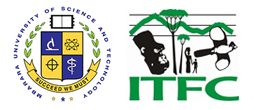Plant use by local people in and around Bwindi Impenetrable National Park (BINP) is as old as mankind that has lived there. Humans used plants for food, medicine, craft making, clothing, building and artwork. When Bwindi forest was made a National Park in 1991, local people were stopped from harvesting resources from the park, yet they played an important role in their livelihoods. Conflicts arose between BINP managers and local people, resulting in widespread fires and intense poaching.
As a consequence, protected area managers sought ways of accommodating the needs of traditional forest users while at the same time maintaining the biodiversity of the forest The Multiple Use Programme (MUP) was thus introduced in 1994 to help mitigate the local people/park management conflict in Bwindi.
Local people are allowed to harvest plants used as medicines and for basket weaving and also to place of hives in the forest, for beekeeping. At the same time, local people are held responsible for assisting park managers in the protection and maintenance of biodiversity, through the reporting of illegal activities encountered during plant collection.
The Multiple Use Programme process
Harvesting of tree barks for medicine
Resource harvesting almost certainly has an impact on the ecological functions of a forest. The magnitude of this impact depends on the nature and intensity of harvesting and the particular species or type of resource under exploitation. Therefore, before any agreements on plant harvesting are made, it is important to determine the amount of plant material (stock) available for harvest in the forest and decide how much may be harvested (a “quota”).
ITFC was mandated by BINP stakeholders (Uganda National Parks at the time, now Wildlife Authority-UWA, International Gorilla Conservation Programme -IGCP, Bwindi Mgahinga Conservation Trust-BMCT, and CARE international) to carry out resource assessments in BINP ( and later on in other protected areas in the Albertine Rift).
For the past seventeen years, ITFC has undertaken such assessments of the presence, abundance and distribution of the plants requested by local people, and recommending to the protected areas managers the type and quantity of plants to be harvested by the local people.
The methods used in this process are: participatory rural appraisal (interviews and observations ), herbarium specimen collection (for botanical identification of the plants) and determining the plant resource density and distribution in the protected areas.
After determining the amount of plant stock available in the protected areas, ITFC recommends a conservative quota of usually 1- 3% of the available stock that the local people can harvest annually from the protected areas. The recommended annual harvest quotas of the plants are what is included in the memorandum of Understanding (MoU) between UWA and the local people resource user groups to begin the harvest of the recommended plants.
The next step that ITFC does is to make a follow-up monitoring study to assess the impacts caused by harvesting of the recommended plants and this normally takes a minimum of three years. The monitoring of such plant harvest involves annual measurement of how much plant material (stem growth rates, bark productions, fruits, etc.) that is produced, any observable plant harvest impacts such as yellowing of leaves and fungal attacks and any other illegal activity such as setting up of snares and signs of timber and pole cutting. It is through such monitoring studies that sustainable harvest quotas are recommended to the protected areas managers which are followed by revising the initially recommended harvest quota upwards or downwards.
A complete review of the MUP is underway and should be completed by 2012 through Robert Bitariho’s PHD study.
